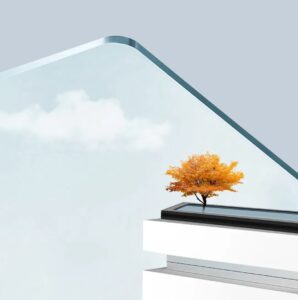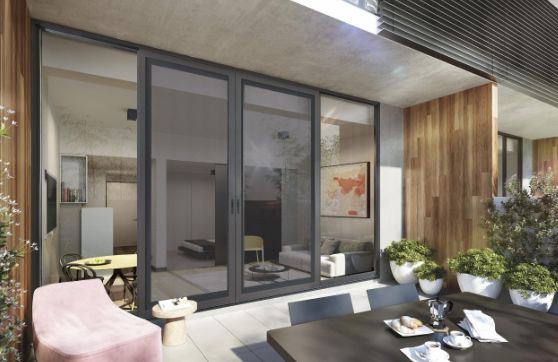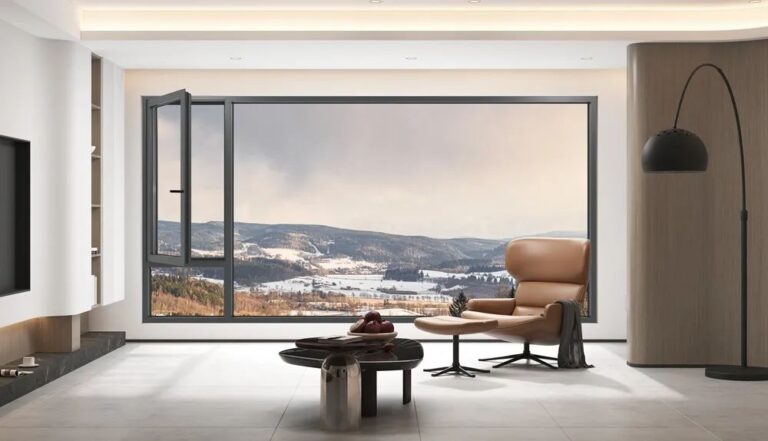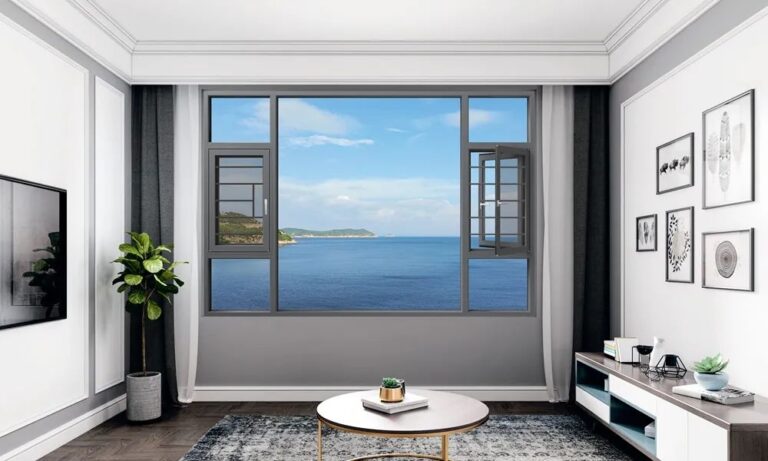When it comes to energy-saving doors and windows, many people first think of multi-cavity heat insulation profiles. This is also understandable, after all, heat insulation strips, sealing strips and other links directly affect the heat insulation effect of doors and windows. In fact, in addition to heat-insulating profiles, the energy-saving effect of glass on doors and windows should not be underestimated, especially the common low-e glass.
Low-e glass is scientifically known as low-emissivity coated glass. Its surface is coated with a layer of metallic silver film and uses special metals to reflect light waves in the far-infrared region to improve the ability of glass to reflect heat. That is to say, low-e glass can improve the heat insulation effect of doors and windows.

Low-e glass meets the country’s mandatory energy-saving requirements for materials used in public buildings and residential buildings. Compared with ordinary glass, Low-e glass can reflect most of the light radiation energy, reduce the heat transfer to the room, reduce the energy consumption of air conditioners, and the energy saving effect can reach 67-70%.
1. What are the characteristics of Low-E glass?
Low-E glass has the following characteristics:
★ High infrared reflectivity, can directly reflect far infrared heat radiation.
★ The surface emissivity is low, the ability to absorb external energy is small, and the heat energy radiated is also small.
★ The shading coefficient Sc has a wide range, and the amount of solar energy transmitted can be controlled according to the needs to meet the needs of different regions.

2. Low-E glass is divided into online and offline. What is the difference between the two?
According to the difference of preparation process, Low-E glass can be divided into two types: offline Low-E glass and online Low-E glass:
★ Off-line Low-E produced by physical method: In vacuum environment, the plasma gas formed by negative high voltage and working gas transfers solid materials to the glass surface to deposit a thin film. Since the coating process is completed on an independent coated glass production line, it is called offline Low-e glass.
★ On-line Low-E produced by chemical method: Low-e film is plated by chemical vapor spraying technology in the high temperature zone of glass forming on the production line of float glass.
Off-line Low-e coatings are afraid of abrasion, corrosion, and metal silver ions are afraid of oxidation, so they are basically used together with insulating glass (so offline Low-E glass is mostly used for home decoration); offline Low-e glass has better thermal insulation performance, The glass surface emissivity is lower than 0.15.
In-line Low-E films are non-silver (such as tin oxide) and are generally integrated with glass. The film layer is resistant to high temperature, corrosion, and is not afraid of abrasion. All online Low-E glass can be directly tempered or used as a single piece; the thermal insulation performance of online Low-E glass is relatively poor, and the emissivity of the glass surface is about 0.17 -0.22 between.
Low-e glass has high reflectivity to infrared rays (especially mid-to-far infrared rays). In summer, it can block the infrared rays from the outside sun from entering the room, slow down the temperature rise in the room, and reduce the cooling consumption of the air conditioner; in winter, it can block the infrared heat from going out of the room through the door and window glass, reduce the loss of indoor heating, and improve the efficiency of indoor heating.

4. The difference between lighting and heat insulation under low-e glass
To put it simply, the difference between lighting and heat insulation of low-e glass is that it can open the “convenient door” to the visible light of the sun, but to the infrared rays emitted by the sun and the far infrared emitted by heaters, household appliances, and the human body. The radiation is blocked by layers, so that infrared radiation cannot enter or exit.

5. The climate and temperature are different between the north and the south. What is the difference in the choice of Low-E glass?
★ High-permeability Low-E glass (glass can be double-layered or triple-layered) is suitable for severe cold or colder regions; the reason is that this region needs to obtain energy through daylighting in winter to reduce heating energy consumption appropriately.
★ Sun-shading Low-E insulating glass can be selected in areas with high solar radiation intensity and high temperature in summer. The reason is that this type of glass has good sun-shading performance and can reduce the transmission of outdoor energy. While maintaining a high visible light transmittance, it can also let the sun Less heat enters the room, so as to achieve the purpose of saving energy and reducing consumption.
★ Insulating glass has 4 surfaces, which are 1#, 2#, 3#, and 4# from outdoor to indoor. In areas where the heating demand exceeds the cooling demand (northern area), the Low-E film layer is located on the 3rd # surface. Conversely, in areas where the cooling demand exceeds the heating demand (south area), the Low-E film layer should be located on the 2# surface.
